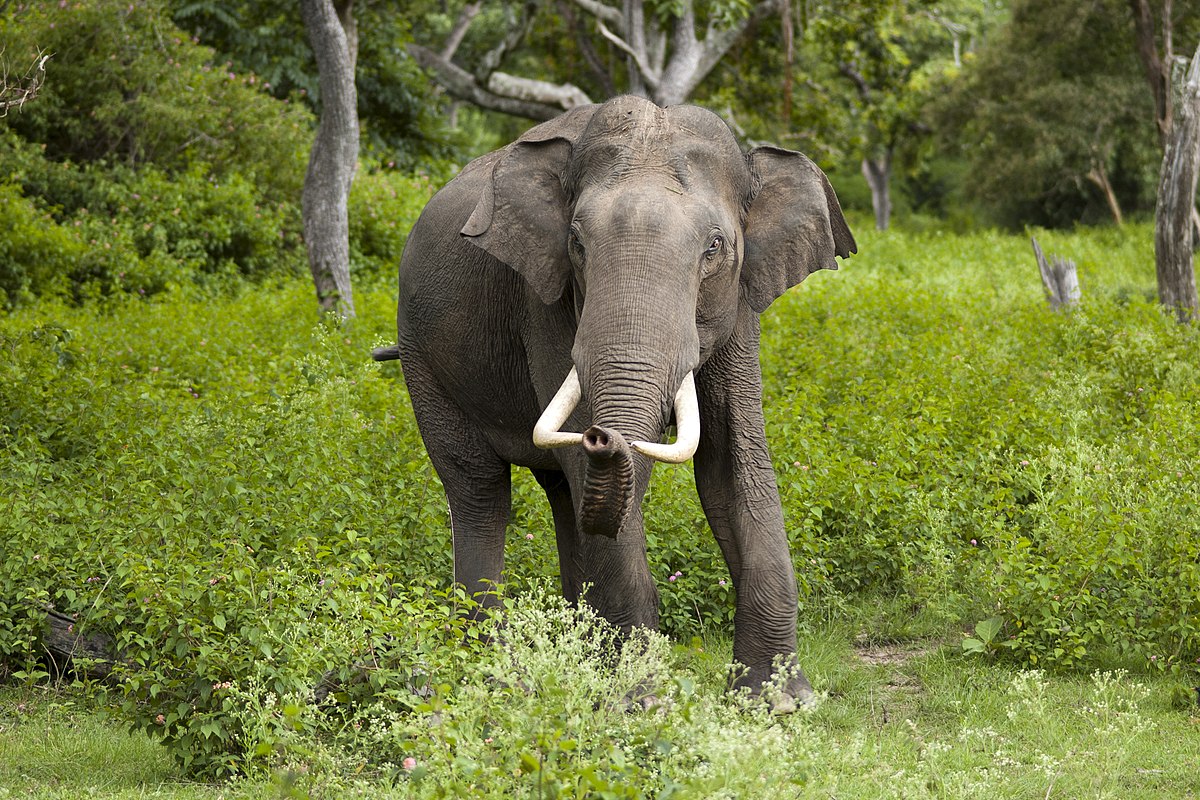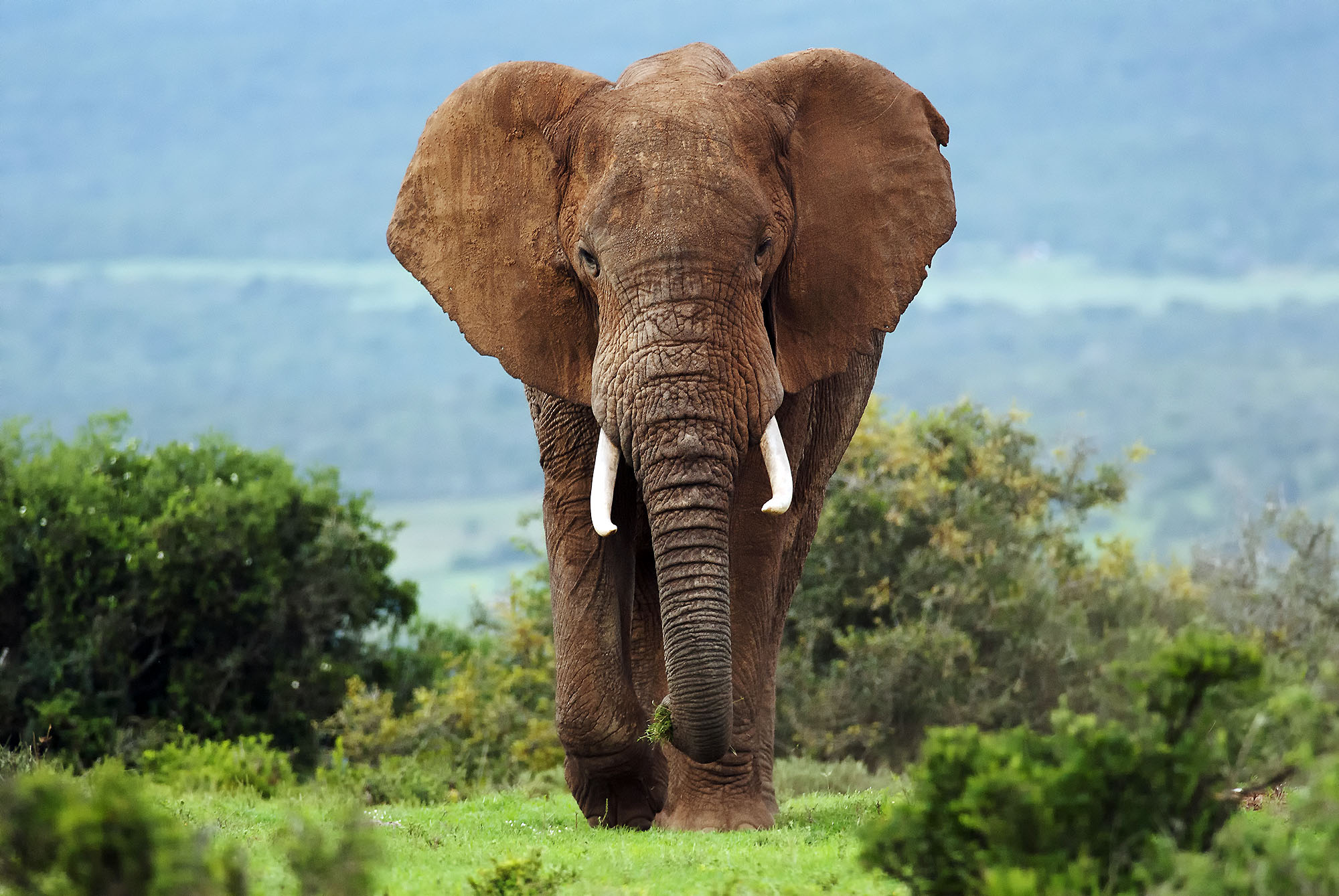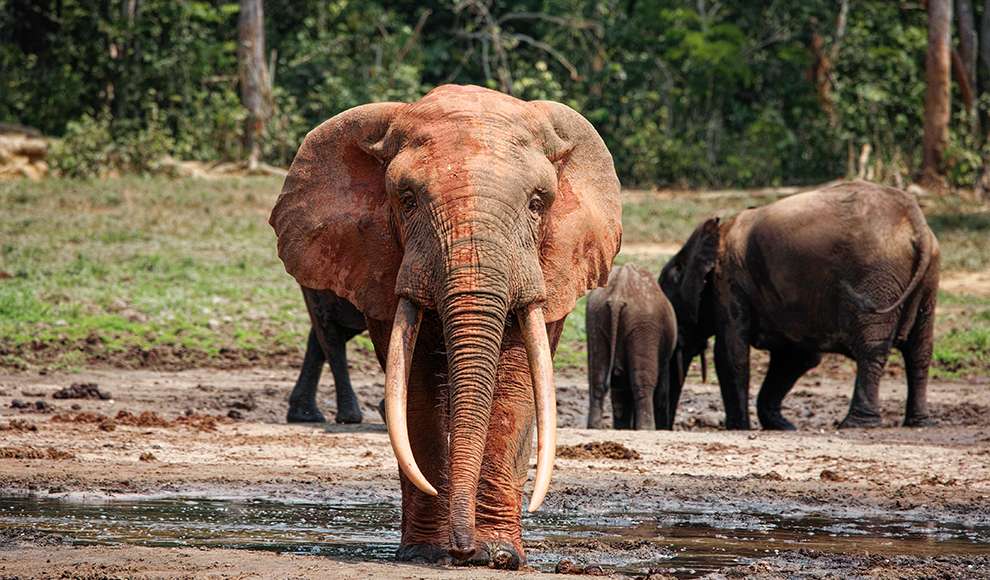Elephants are the largest land mammals on earth and have distinctly massive bodies, large ears, and long trunks. They use their trunks to pick up objects, trumpet warnings, greet other elephants, or suck up water for drinking or bathing, among other uses.
There are three species of elephants: the African bush elephant, the African forest elephant, and the Asian elephant. The African savanna elephant is the largest elephant species, while the Asian forest elephant and the African forest elephant are of a comparable, smaller size.
You are reading: Types Of Elephants: The 3 Species Of Elephants
In this article, we will explore the three main types of elephants in detail.

3 Types Of Elephants
African bush elephant

African Elephant, Loxodonta africana, bull, male, Addo Elephant Park, South Africa
The African bush elephant, also known as the African savanna elephant, is one of two extant African elephant species and one of three extant elephant species. It is the largest living terrestrial animal, with bulls reaching a shoulder height of up to 3.96 m (13 ft 0 in) and a body mass of up to 10.4 t (11.5 short tons).
The African bush elephant has grey skin with scanty hairs. Its large ears cover the whole shoulder, and can grow as large as 2 m × 1.5 m (6 ft 7 in × 4 ft 11 in). Its large ears help to reduce body heat; flapping them creates air currents and exposes large blood vessels on the inner sides to increase heat loss during hot weather.
The African bush elephant’s ears are pointed and triangular shaped. Its back is shaped markedly concave. The African bush elephant occurs in sub-Saharan Africa which includes Uganda, Kenya, Tanzania, Botswana, Zimbabwe, Namibia, Zambia, and Angola.
It moves between a variety of habitats, including subtropical and temperate forests, dry and seasonally flooded grasslands, woodlands, wetlands, and agricultural land from sea level to mountain slopes. In Mali and Namibia, it also inhabits desert and semi-desert areas.
African forest elephant

The African forest elephant, also known as Loxodonta cyclotis, is one of the two living species of African elephants. It is native to the dense tropical rainforests of West and Central Africa.
The African forest elephant is the smallest of the three living elephant species, reaching a shoulder height of 2.4 m (7 ft 10 in). Both male and female African forest elephants have straight, down-pointing tusks, which begin to grow once the animals reach 1–3 years old.
The African forest elephant’s diet is dominated by fruit, and they play a crucial role in dispersing many tree species, particularly the seeds of large trees which tend to have high carbon content.
African forest elephants live in family groups of up to 20 individuals and forage on leaves, grasses, seeds, fruit, and tree bark. The African forest elephant is considered critically endangered by the International Union for Conservation of Nature (IUCN) due to poaching for ivory and habitat loss caused by deforestation, logging, and the conversion of the forest to agriculture and mining uses.
Asian elephant
The Asian elephant, also known as the Asiatic elephant, is the only living species of the genus Elephas and is distributed throughout the Indian subcontinent and Southeast Asia. It is the largest living land animal in Asia, with adult males weighing between 6,000 and 12,000 pounds.
The Asian elephant has three subspecies: the Indian elephant, the Sri Lankan elephant, and the Sumatran elephant. The Indian elephant is the most widely distributed of the subspecies, while the Sri Lankan elephant is the largest and the Sumatran elephant is the smallest.
The Asian elephant is smaller than the African bush elephant and has the highest body point on the head. The back is convex or level, and the ears are small with dorsal borders folded laterally.
The Asian elephant is listed as Endangered on the IUCN Red List, with the population declining by at least 50% over the last three elephant generations, which is about 60–75 years. The primary threats to the Asian elephant are loss of habitat, habitat degradation, fragmentation, and poaching.
Read more : 9 Types Of Black Bugs With Pictures And Identification Guide
The Asian elephant is a quintessential flagship species, deployed to catalyze a range of conservation goals, including habitat protection and restoration, anti-poaching, and human-elephant conflict mitigation.
FAQS
1. What are the three species of elephants?
There are three species of elephants: the African bush elephant, the African forest elephant, and the Asian elephant.
2. What are the differences between African and Asian elephants?
There are more than 10 physical characteristics that differentiate Asian and African elephants. For example, Asian elephants’ ears are smaller compared to the large fan-shaped ears of the African species. Only some male Asian elephants have tusks, while both male and female African elephants grow tusks. African savanna elephants are larger and their tusks curve outward. The tusks of the smaller African forest elephant are straight and point downward.
3. How many species of African elephant are there?
There are two species of African elephants: the African bush elephant and the African forest elephant.
4. What is the size difference between the three species of elephants?
The African savanna elephant is the largest elephant species, while the Asian elephant and the African forest elephant are of a comparable, smaller size.
5. What is the habitat of the African forest elephant?
The African forest elephant inhabits the dense tropical rainforests of West and Central Africa.
6. What is the conservation status of the African forest elephant?
The African forest elephant is considered critically endangered by the International Union for Conservation of Nature (IUCN) due to poaching for ivory and habitat loss caused by deforestation, logging, and the conversion of the forest to agriculture and mining uses.
7. What is the habitat of the Asian elephant?
The Asian elephant is distributed throughout the Indian subcontinent and Southeast Asia.
8. What is the conservation status of the Asian elephant?
The Asian elephant is listed as Endangered on the IUCN Red List, with the population declining by at least 50% over the last three elephant generations, which is about 60–75 years. The primary threats to the Asian elephant are loss of habitat, habitat degradation, fragmentation, and poaching.
Source: https://petstutorial.com
Category: Animals










